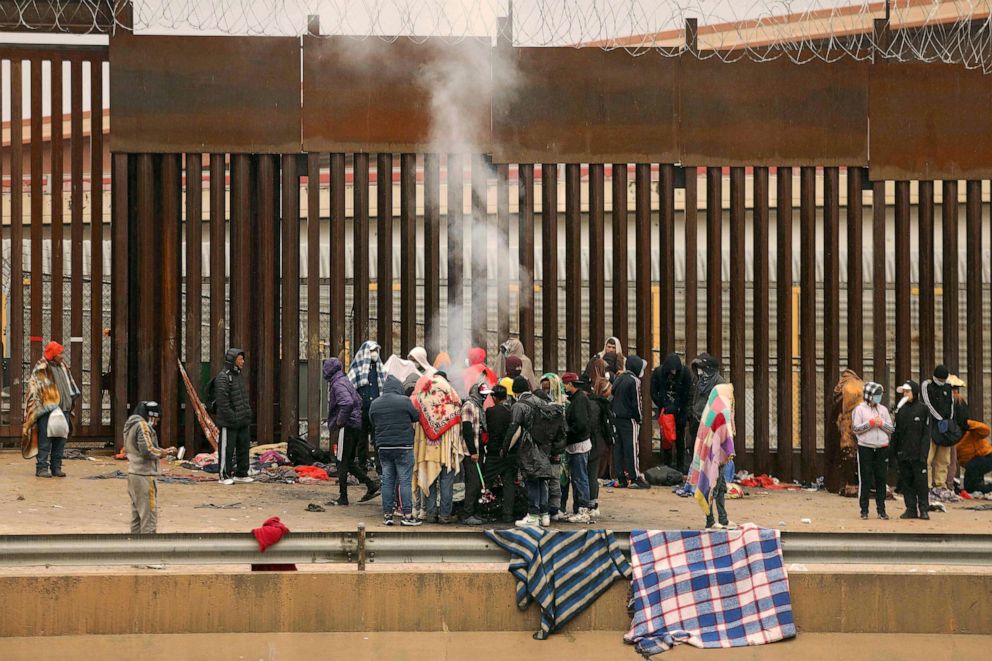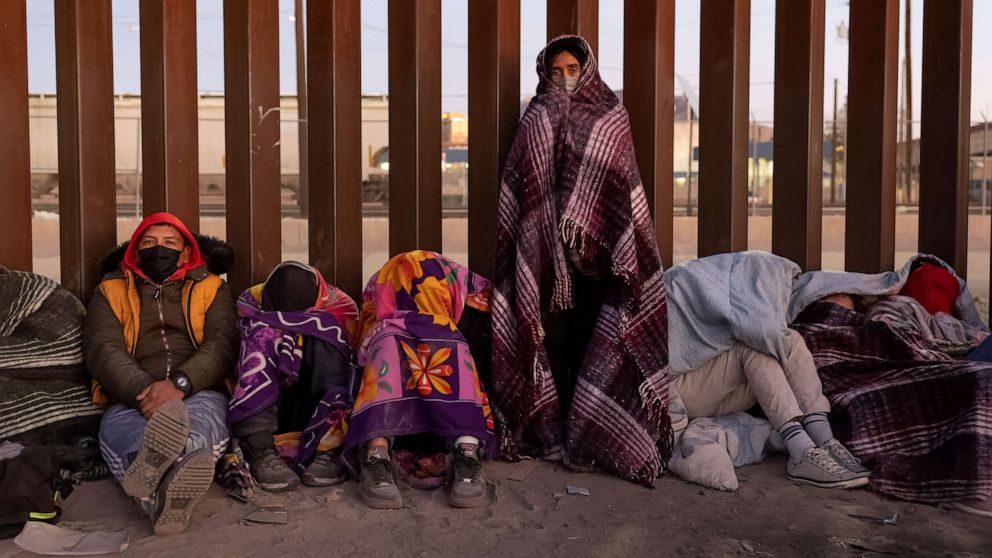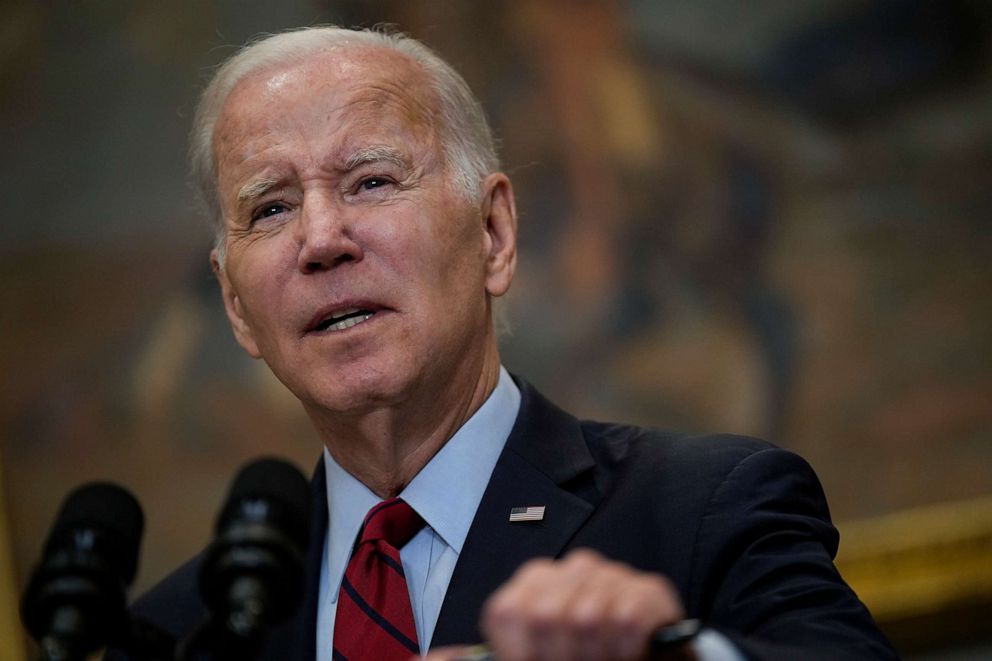The Biden administration last week announced a significant new crackdown on unauthorized migration at the border while opening new legal pathways for some people to enter the U.S
At issue once again is Title 42, a decades-old public health law that was first used by the Trump administration in the wake of COVID-19 to initiate restrictions on humanitarian protections and quickly expel migrants.
While the Centers for Disease Control and Prevention attempted last year to rescind the border expulsion order, a federal judge in Louisiana kept it in place -- and then the Supreme Court agreed to hear an appeal from mostly GOP-led states, stopping another federal judge's ruling that Title 42 had to end in December.
The government under President Joe Biden has both defended and been critical of Title 42, but officials now say they must enforce it while the legal battles play out even as Biden said last week, "I don't like Title 42."
The plan announced last week will utilize Title 42 and other methods like the standard authority under Title 8 to send as many as 30,000 unauthorized Haitians, Cubans, Nicaraguans and Venezuelans to Mexico each month.
At the same time, the Department of Homeland Security is expanding a parole program to allow up to 30,000 migrants per month to seek asylum as long as they meet specific criteria. Applicants will need sponsorship in the U.S. and are required to pass background checks. Those who cross into the U.S. illegally will be disqualified.
"What we heard today was a major expansion of enforcement at the border but, at the same time, the creation of some legal pathways for people to come into the country lawfully and some ways of applying for an asylum appointment ahead of time as well," said Andrew Selee, president of the nonpartisan Migration Policy Institute.

Migrants seeking asylum in the United States stand around a fire to keep warm after crossing the Rio Grande from Mexico, Jan. 2, 2023.
Herika Martinez/AFP via Getty Images
Diplomatic tensions and logistical challenges have prevented the return of many Cubans, Nicaraguans and Venezuelans to their home countries. The new agreement with Mexico will allow for more of them to be swiftly returned across the border as long as the Title 42 order remains in place, pending a Supreme Court decision. (Arguments before the court are scheduled for February.)
While the move was met with criticism from both sides of the political spectrum -- Sen. Bob Menendez, D-N.J., called it a "disastrous and inhumane relic" -- Homeland Security Secretary Alejandro Mayorkas said Sunday on ABC's "This Week" that the immigration system is constrained by Congress' inability to pass bigger changes.
The Department of Homeland Security intends to implement the newly announced migrant removal plan even if Title 42 ends, officials said Thursday.
However, some experts say using standard immigration processes to return non-Mexicans to Mexico could be difficult and will require full cooperation with the Mexican government -- a topic that is likely to arise when Biden meets with Andrés Manuel López Obrador for a summit this week.
"It is going to be a little more complicated because Mexico would have to sign an actual agreement with the United States to take people back under Title 8, which was the regular way of returning people," Selee, with the Migration Policy Institute, told ABC News. "But it is possible to do that."
Mexico has opposed so-called "safe third country" agreements to take migrants in the past and was reluctant to cooperate even with admitting migrants temporarily under the "remain in Mexico" protocols begun under the Trump administration. But throughout the pandemic, Mexico has taken back some non-Mexican migrants, primarily from northern Central American countries.

Immigrants bundle up against the cold after spending the night outside along the U.S.-Mexico border fence on Dec. 22, 2022, in El Paso, Texas.
John Moore/Getty Images
The U.S. conducted nearly 345,000 expulsions of El Salvadorans, Guatemalans and Hondurans in fiscal year 2022. The vast majority were sent back to Mexico, one U.S. official said.
Small numbers of Cubans, Nicaraguans and Venezuelans had also been returned to Mexico prior to last week's announcement, according to two U.S. officials.
Despite the potential diplomatic and legal complications that could prevent deportations, Mayorkas said Thursday that the administration intends to use standard immigration processing under Title 8 of U.S. law to return unauthorized Cubans, Haitians, Nicaraguans and Venezuelans once Title 42 ends.
"The longevity of these programs is something that, of course, depends on what we are experiencing at the border and the dynamism, as I mentioned, of the migration challenge that is gripping this hemisphere -- and quite frankly, the entire world," Mayorkas said. "With respect to Mexico, Mexico makes its independent decisions with respect to the needs it must address through the mechanisms it has available to it."
Immigrant advocates remain concerned that the Biden administration's new plan will effectively result in an expansion of the Title 42 order for Cubans, Haitians and Nicaraguans, curtailing their access to asylum and other humanitarian protections due to the swift nature of the removal process.
Eleanor Acer, senior director Human Rights First, said the strategy signified a "doubling down on cruel and counterproductive policies" from the Trump administration.
"Every day that these policies are in place, people seeking refuge will be turned away to suffer horrific abuses," Acer said in a statement. "This subversion of human rights and refugee law is a stain on the record of President Biden and his administration that will inflict indelible harm on human lives, human rights, and the refugee protection system globally."

President Joe Biden delivers remarks about border security policies in the Roosevelt Room in the White House, Jan. 5, 2023.
Drew Angerer/Getty Images
While the Trump administration did attempt to strong-arm Mexico into accepting more migrants, there are significant distinctions with the Biden administration's approach, such as the pairing of parole options and a commitment to tripling refugee admissions from the Western Hemisphere over the next year.
"I think we have to see the details before we know -- there are certainly echoes of what we saw during the Trump administration, even if it's not exactly the same policy," Selee said.
There are limited exceptions made for those who might be subjected to the Title 42 order, including those deemed "particularly vulnerable" by the Department of Homeland Security.
ABC News' Luke Barr contributed to this report.
"some" - Google News
January 09, 2023 at 05:23AM
https://ift.tt/5zFCYOy
Explaining Biden's new border strategy: Expelling some migrants while expanding some asylum claims - ABC News
"some" - Google News
https://ift.tt/JRt7THD
Shoes Man Tutorial
Pos News Update
Meme Update
Korean Entertainment News
Japan News Update
Bagikan Berita Ini














0 Response to "Explaining Biden's new border strategy: Expelling some migrants while expanding some asylum claims - ABC News"
Post a Comment